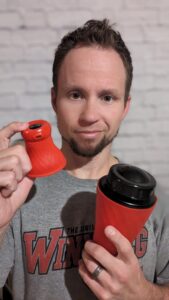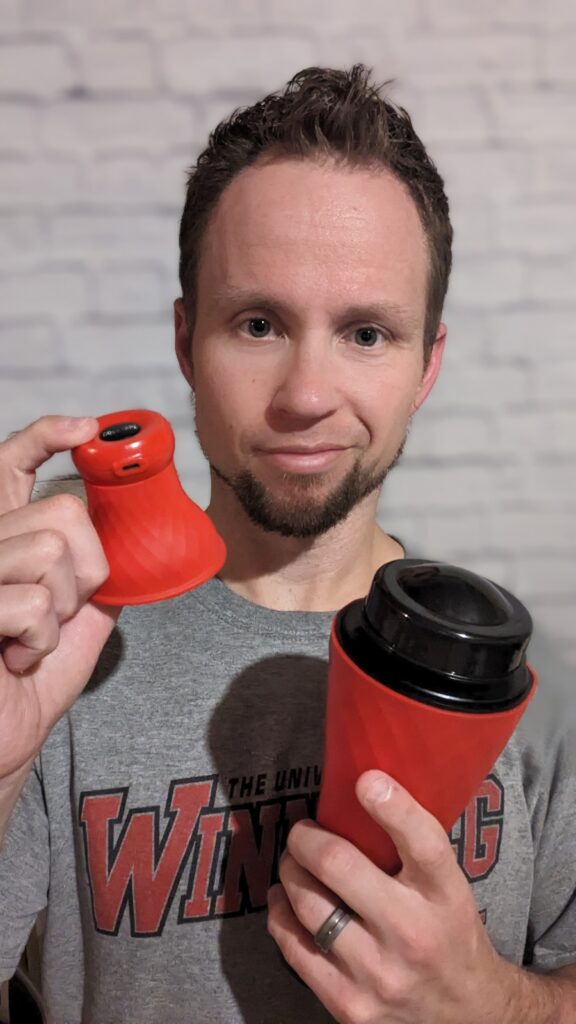Positive Vibes Only
Last year RockTape came out with a couple new products, both vibration tools, the RockWave and RockVibes. The RockWave may often get lumped in with a massage gun, however, the major difference being the massage gun provides percussive stimulation whereas the RockWave provides vibratory stimulation. The RockVibes are cups that combine the effects of decompression with the stimulation of vibration. I was pretty eager to get my hands on the RockVibes as combining decompression with vibration I felt would open up a whole new world of possibilities for treatment.
Along with the new tools came a new continuing education course, Vibration Specialist. I ended up being part of the inaugural course in Canada and it did not disappoint. The course itself builds off a combination of the material from the previous courses RockTape already offers. Instead of going into specifics of the course, I thought I would go into specific ways I practically use each tool in treatment.
With the RockWave having 6 different attachments it really opens up the possibilities of practically incorporating it into treatment. Two ways I find myself regularly using it are if someone has a very acute injury or the area is very sensitive to any touch or pressure. There are 2 attachment heads that are designed more specifically for this as they come with a soft cover. I have found the RockWave being able to work in these highly sensitized areas where normal hands-on manual therapy would be too much for a client to tolerate. This can then help with pain mitigation (which can then allow for more treatment modalities), mechanoreceptor stimulation, fluid dynamics, and provide better awareness of the area to the brain which all work together to help client’s move better, feel better, and recover better. The second way that I will use the RockWave is when I am trying to make someone’s brain aware of a specific muscle. Using the RockWave for 60-90s over a muscle that I want the client’s brain to use and be more aware of, I have found works incredibly well, and client’s can instantly see what will happen to their pain and other symptoms if we can get that particular muscle working better.

For using RockVibes, I have a specific example of when I used them. I had a client that came in with shoulder pain that was the result of improper form when using their bow. They had decided to rest their arm for the past 4 weeks, however, this did not help at all and on top of it, their range of motion had greatly decreased. Specifically, raising their arm in front (flexion), to the side (abduction), and outwardly rotating it (external rotation). They had had dry needling the day before which they reported hurt but noted mild range of motion improvements from it. They went into our appointment with the expectation treatment was going to be painful, which worried them because they had to work after it, and they mainly use their hands and arms for their work. Taking all this into consideration I felt hands on manual therapy would not be tolerated well, and that a better option would be using the RockVibes. Placing the RockVibes over the client’s shoulder, upper arm, and upper chest we started going through shoulder range of motion both passively and then actively. We started lying down, then progressed to seated and then finally standing. The client started noticing the more repetitions they did the better their shoulder was feeling. At the end of the treatment the client left with full range of motion, significant decrease in their pain, and they noted they had gotten a requisition for an X-ray which they were not going to bother with now. Most importantly with the drastic changes in range of motion the client felt relief that there wasn’t something seriously wrong with their shoulder. The RockVibes got that client and myself a big win that day, and I know I could not have gotten that with hands on manual therapy.
After continuing to become more familiar and confident in the RockVibes and RockWave, I find I’m using them daily with treatments to get results that I could not get with hands-on manual therapy alone. Using vibration as a stand-alone technique or intertwining it with hands-on manual therapy allows treatment to be not as intense and aggressive while being more effective, it’s a win-win for the client and therapist. If this has peaked your interest in vibration therapy, I recommend taking the Vibration Specialist course from RockTape to learn a new skill to help your clients Go Stronger, Longer.
Learn more about the vibe products
Learn more about the vibration course
